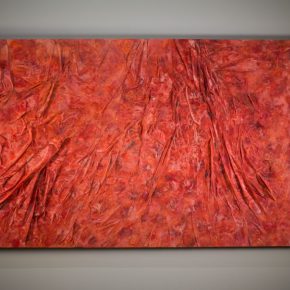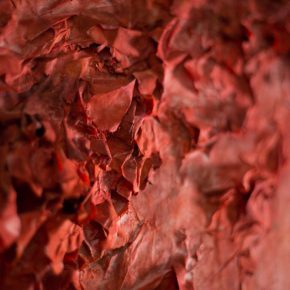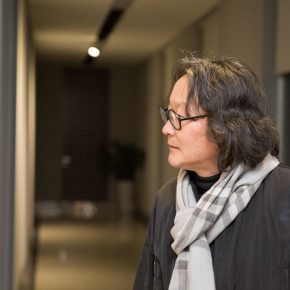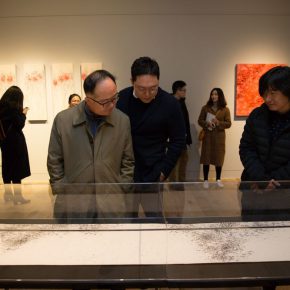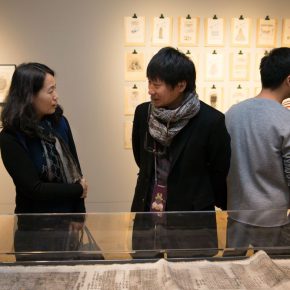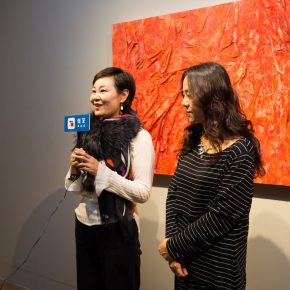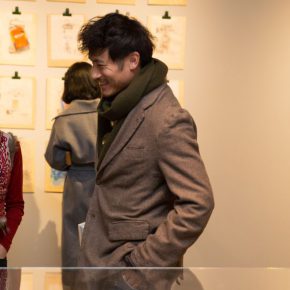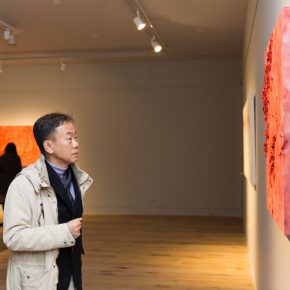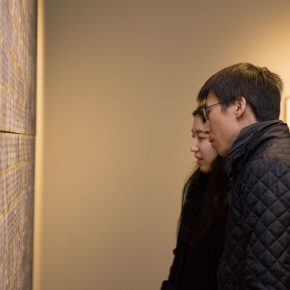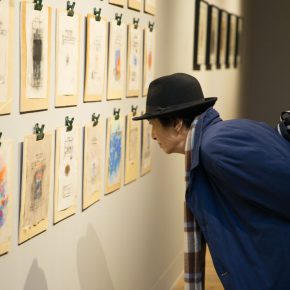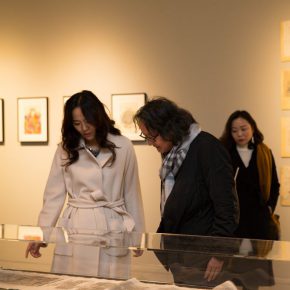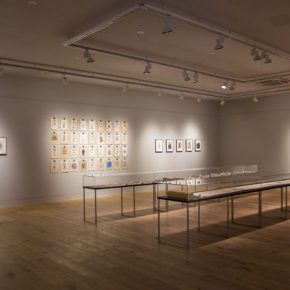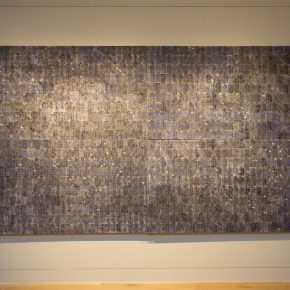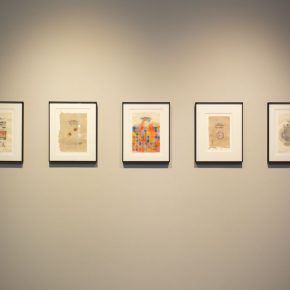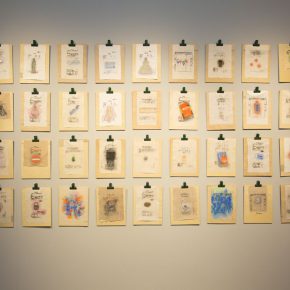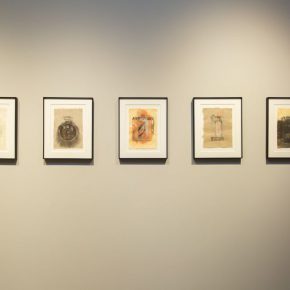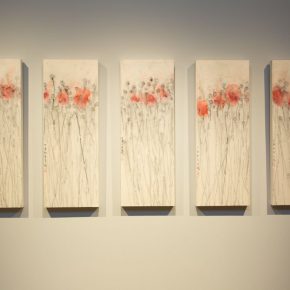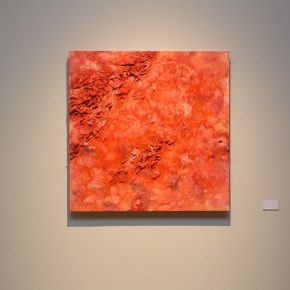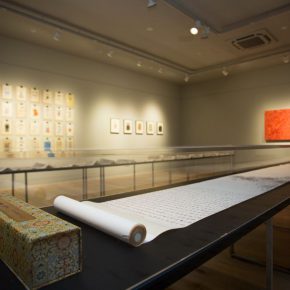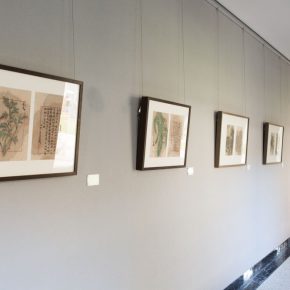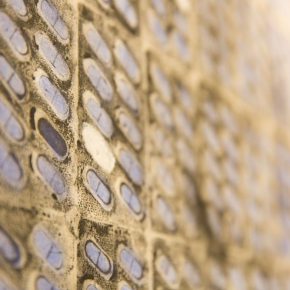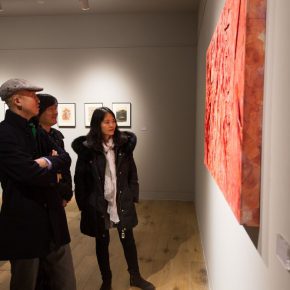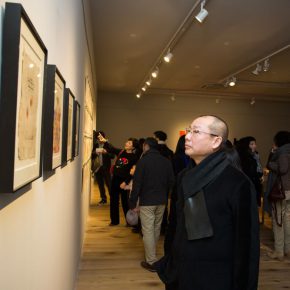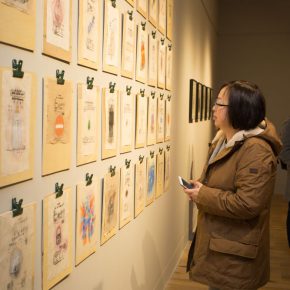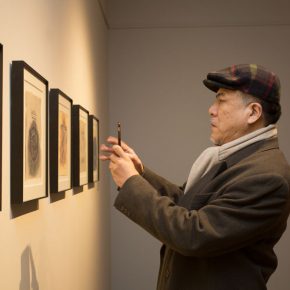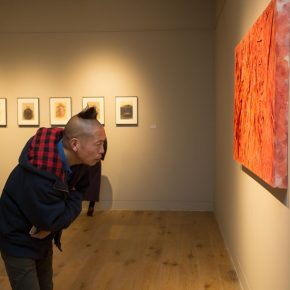
“Under the sky, is Ecstasy to be found or not? ” This is the question and pursuit of “Ecstasy” which means the “the Greatest Happiness” by Chuang Tzu, and it is also a supreme realm sought after by people. “Healing” artist Zhang Yanzi has extended her thinking on “happiness” in her creations over the past two years, and realized her conceptual expression through the language of ink and wash and experiments with material. On November 18, Zhang Yanzi Solo Exhibition “The Ecstasy” was unveiled at FEEFAN’S ART, it was co-organized by FEEFAN’S ART and Galerie Ora-Ora, it was curated by Gao Difei, Founder of FEEFAN’S ART, centered around her recent work themed on “happiness” including “The Ecstasy”, “The Ecstatic Fantasy”, “The Ecstatic Refinement”, “Yun Zhong Jun” series, “Prescription” series as well as “Purple Clouds”, “The Diamond Sutra”, “Hollow” and so on.
This exhibition originated from a talk between the curator and the artist, Curator Gao Difei has struggled with aches in her body over the years, this kind of life experience led her to pay attention to Zhang Yanzi who has created “The Remedy”. Gao Difei thought that the traditional Chinese character of “medicine” was made of grass radical and happiness, which is the comprehension of medicine by the older generation of Chinese people, this is something people feel happy with when they take pills. Thus she curated this exhibition on various experiences of lives, but all of them concern happiness and how to heal the body and mind.
The Ecstasy is the same artwork as the theme of the exhibition, the artist uses the juice of flowers mixed with seeds, mineral colors, gauze and other materials to create her art, she folded rice paper, showing a rugged but sparsely populated beauty. Zhang Yanzi introduced the wrinkled texture that resulted from her “mounted” experience, mounted extension of Chinese painting which was originally intended to be smooth, but the artist did not felt angry with the wrinkles caused by technical problems, instead she felt excited and she tried an opposite way, then magnified it “the imperfectness” to become a new tool and language. She named this creation after “Ecstasy”, does it mean that “unhappiness” is also the greatest happiness in the world? Related to this work, the exhibition showcases Zhang Yanzi’s thinking of various dimensions on “happiness”.Zhang Yanzi’s series of creation is always associated with “remedy” and “Chinese herbal medicine”, while conducting studies on the relationship between these two, she found that analgesic Chinese herbs often bring pleasure and hallucinations to people, thus she used this clue to collect a series of herbal medicine which would bring pleasant sensations to people, therefore she formulated this series of “Yun Zhong Jun”. Such as absinthe, a herb that can release damp heat, strengthen the stomach and promote appetite which can also be brewed into absinthe, meanwhile it is also a psychedelic herb. Myristica fragrans can work as medicine to warm the stomach, and it is also an important spice and condiment, it contains methyl isoeugenol which can inhibit the central nervous system and bring about fantasies. When the artist visited the tropical area in the rain forest of South America, she witnessed the magical power of “Ayahuasca”. Besides this series of work, the artist has written that herbal characteristics, usually end in “easy addiction, which should be carefully used.” It seemingly suggests that this illusion of happiness is accompanied with danger.
Is there a fixed standard for the maximum of happiness? Must it be accompanied by danger? Different people have their own answers. Zhang Yanzi has conducted research with many friends around her, and she received a variety of strange happy answers based on which she created “Prescriptions”. The artist described various happy feelings on old prescription notes, cigarettes, mobile phones, books, mah-jong, music, internet, religious beliefs, delicious food all appeared in her work and results in a happy prescription. Happiness is a subjective feeling of one’s own, which is so-called “you are not a fish, how would you know the happiness of fish,” everyone can always find a way to make oneself happy. Zhang Yanzi also believed that the source of happiness is not hierarchical, everything has been realized through the stimulation on the neurotransmitter in a certain area of the brain, which is the sense of happiness. Zhang Yanzi also extended this proposition of happiness to considerations on Nature, Universe, spiritual belief, and she created “Purple Clouds” and “0000000”, of which “Purple Clouds” reflected the all the beings on the earth in the image of an ant . The interpretation of Emperor Star also symbolized a relationship between all the beings within the universe. “0000000” begins with a statue of Buddha and the artist transcribed the Kumarajiva translation of “Diamond Sutra”. The work is based on the ink-blended Mandala juice, and the artist was in a “confused” state while she created this work, perhaps it is the wisdom of emptiness.
From “healing” to “ecstasy”, this is yet another sublimation of ink and wash painting in recent years, from the herbal theme depicted in the exhibition, the hidden logic of “remedy” and “sense of pleasure” could be found, from the transition of logic there is a danger of happiness, thus an equal and open structure of happiness could also be found in the exhibition, perhaps just as with the absent pills in the “Hollow”, different audiences get a happy secret in various hollow arrangements. This exhibition will remain on view till December 28, 2017.
Text by Zhang Wenzhi, translated and edited by Sue/CAFA ART INFO
Photo by Yang Yanyuan and Hu Sichen/CAFA ART INFO


